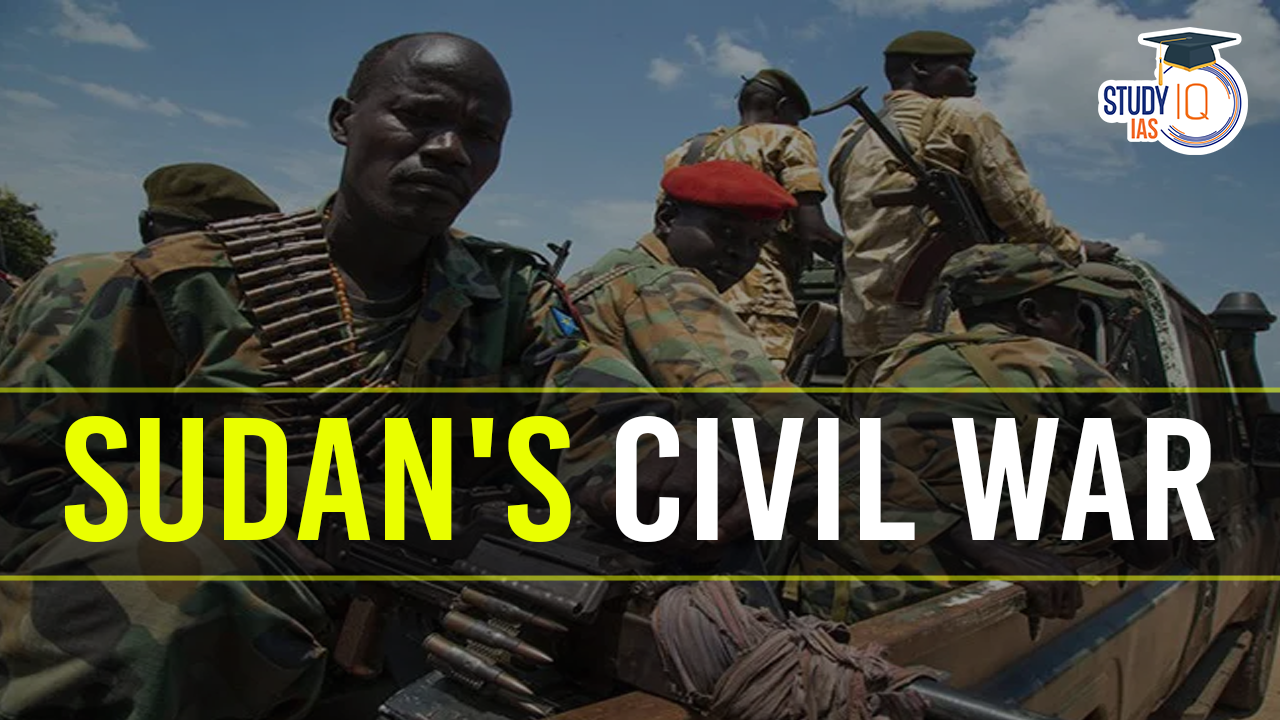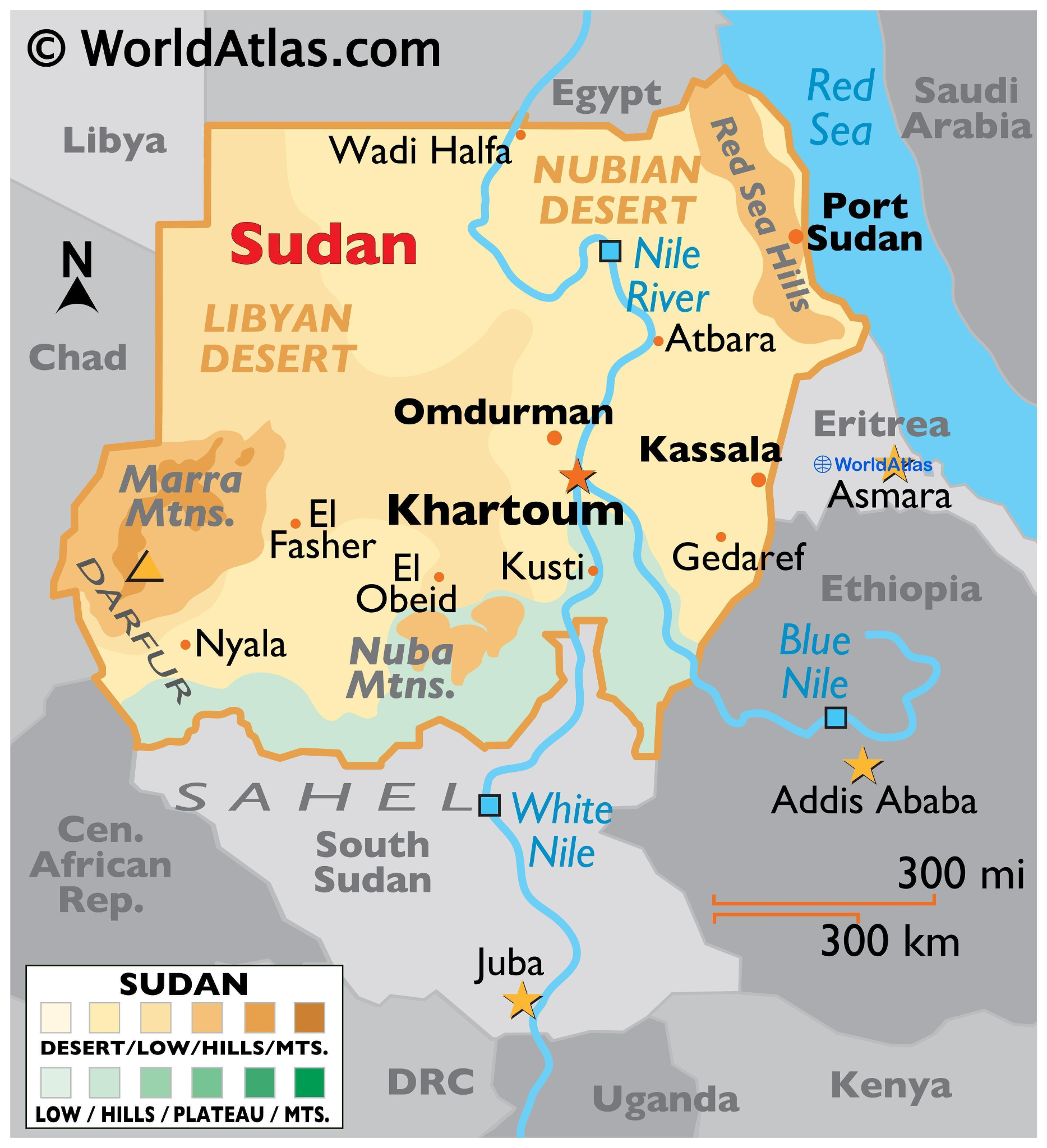Table of Contents
Context: Sudan’s current conflict is fueled by a persistent identity crisis and the inability of successive governments to manage the nation’s vast diversity of ethnic groups and languages.
Sudan’s Civil War Historical Context
- Post-Independence Mahdist State: The government formed in 1956 promoted an Arab-Islamic identity based on Mahdism, an Islamic Sufi order from the 1880s.
- This identity didn’t reflect Sudan’s diversity and tried to enforce Mahdist principles across the nation, leading to widespread resistance.
- 1989 National Islamic Front Coup: The National Islamic Front, an alliance of army officers and the Muslim Brotherhood, seized power in 1989.
- Omar al-Bashir, supported by Islamist Hassan al-Turabi, aimed to establish an Islamic state.
- The government set up a security apparatus to arrest and torture dissidents, enforcing an Islamization agenda with a 1991 penal code and creating the “People’s Police.”
- Rise of the Janjaweed Militias and RSF: In 2003, al-Bashir enlisted Janjaweed militias to quell an insurgency in Darfur, keeping army elites away from these conflict zones.
- In 2013, al-Bashir formally rebranded these militias as the Rapid Support Forces (RSF) and integrated them into national security.
- By 2017, the RSF was ratified into law and led by Mohamed Hamdan Dagalo (Hemedti), increasing its power and influence.
- 2019 Overthrow of Al-Bashir: Protests in 2018, driven by economic grievances, led to al-Bashir’s ouster in April 2019 by the military.
- A transitional military government was established, but protesters continued demanding civilian rule.
- With African Union mediation, a military-civilian transitional administration was formed in August 2019.
- Failed Coups and Escalating Tensions: A failed coup in September 2021 preceded another coup in October led by Abdel Fattah al-Burhan, undermining Sudan’s democratic transition.
- The months leading up to the April 2023 conflict saw violent civilian repression and rising tensions between the army and RSF.
| Demographic Of Sudan |
| Sudan has 49 million people and is incredibly diverse, with 19 major ethnic groups, 597 sub-groups, and hundreds of languages.
|
Reasons for Coup in Sudan
- Disputed Power Dynamics: Tensions between the Sudanese Armed Forces (SAF) and Rapid Support Forces (RSF) escalated over power-sharing arrangements.
- The October 2021 coup led by army chief Abdel Fattah al-Burhan disrupted Sudan’s democratic transition, sidelining the civilian government.
- Marginalisation and Economic Decline: Marginalised communities felt excluded from wealth distribution, and corruption exacerbated poverty and unemployment.
- Rapid economic decline after the 2019 transitional government took power deepened dissatisfaction.
- Ideological Differences: Competing visions for Sudan’s future led to political and ideological disputes between the military factions, particularly concerning integration of the RSF.
- Militia Empowerment: The RSF’s dominance emerged from three conditions: the Darfur conflict, government support allowing them access to resources, and Hemedti’s portrayal of the RSF as a militia representing marginalised rural Arabs.
- The RSF’s increasing influence expanded through commercial ventures, growing autonomous from the state.
- This is helping it grow autonomous from government control.
Present-Day Conflict
- Power Struggle: The SAF and RSF began competing for control of strategic locations and key resources in April 2023.
- Both factions mobilised their forces, leading to widespread clashes in major cities, border regions, and resource-rich areas.
- Civilian Impact: The conflict has resulted in significant civilian casualties, mass displacement, and the destruction of infrastructure.
- Critical shortages of essential goods, like food and medicine, have exacerbated the humanitarian crisis.
- Economic Consequences: The war has further destabilised the economy, leading to inflation and the collapse of businesses and services.
Way Forward
- International Mediation: International organisations should mediate peace talks, leveraging their influence to facilitate a ceasefire between the SAF and RSF.
- Inclusive Governance: Establish a transparent civilian-led government representing diverse ethnic and regional interests.
- Formulate policies for equitable resource distribution and integrate marginalised communities into governance.
- Security Sector Reform: Reform the security sector by disbanding autonomous militias and incorporating them into a unified national security structure.
- Humanitarian Support: Ensure that humanitarian aid reaches all conflict-affected regions and populations.
- Support reconstruction efforts, particularly for critical infrastructure.
- Economic Recovery: Create an economic recovery plan with international support, focusing on rebuilding infrastructure, stabilising currency, and reducing inflation.
- Accountability and Justice: Establish mechanisms for justice and accountability for crimes committed by any armed group, including state actors.
- Promote national reconciliation and community rebuilding initiatives.



 Bharat Bandh 9 July 2025: Over 25 Crore ...
Bharat Bandh 9 July 2025: Over 25 Crore ...
 Sukhoi Su-57: Will India Choose Russia�...
Sukhoi Su-57: Will India Choose Russia�...
 World Bioproduct Day 2025: Date, Theme, ...
World Bioproduct Day 2025: Date, Theme, ...





















